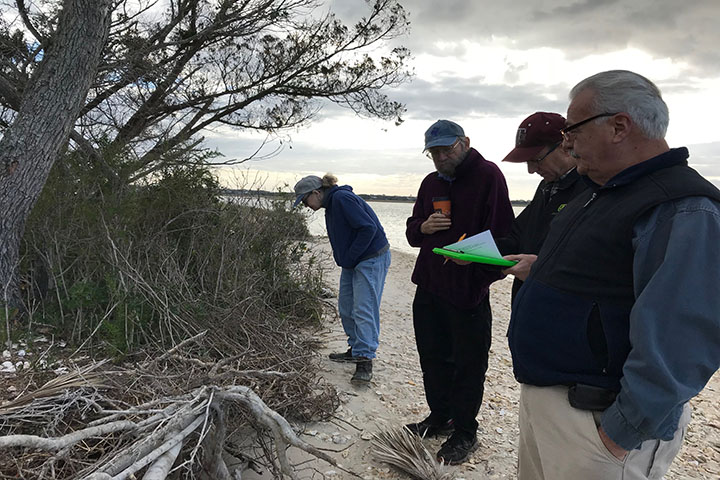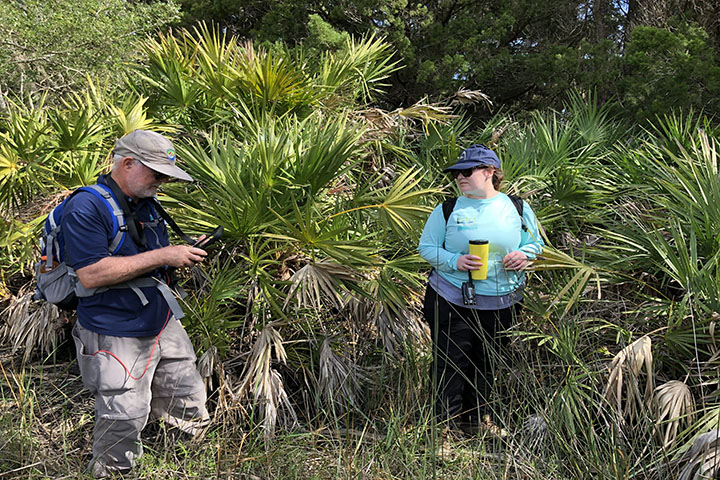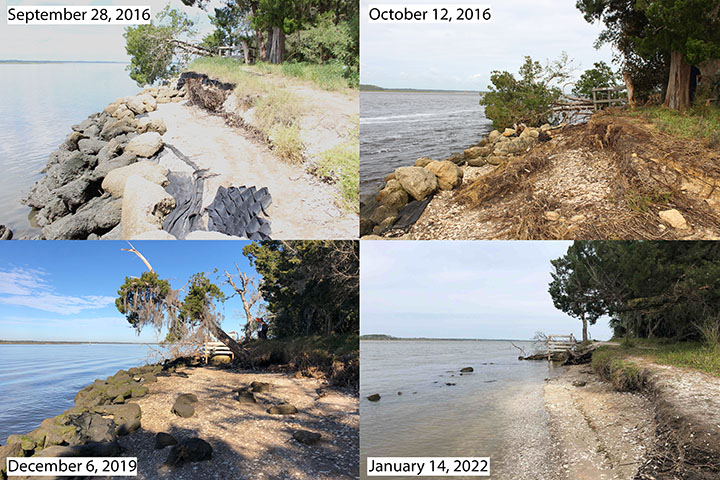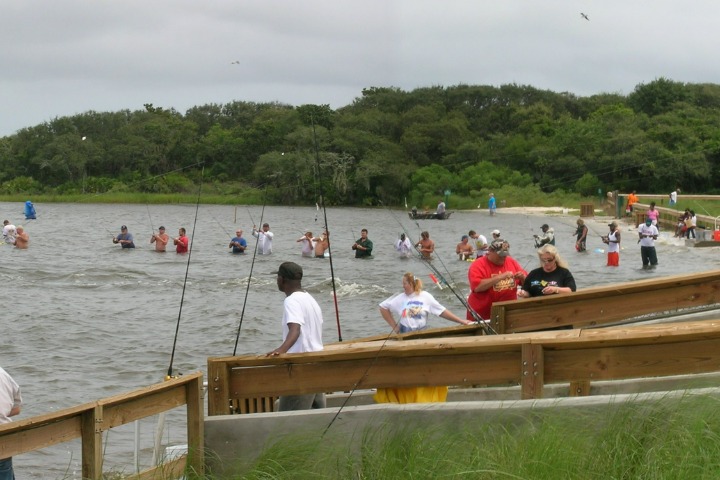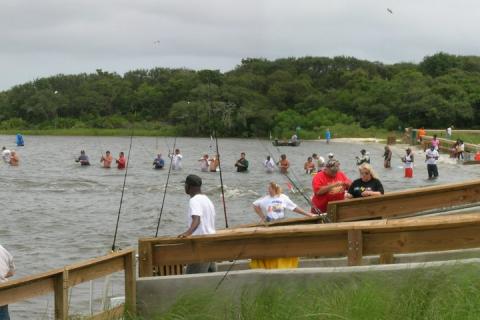
As climate change and development threaten the natural and cultural resources of the Guana Peninsula, this project used a combination of archaeological investigations and applied anthropological methods to increase understanding of how people past and present have used the resources to inform their future management.
The project
For over 6,000 years, people have called the Guana Peninsula home, largely due to the bountiful resources of the estuary. These resources, both natural and cultural, are at risk now more than ever due to threats from climate change impacts and development. The GTM Research Reserve directly manages the southern portion of the Guana Peninsula, providing stewardship, visitor access, and, along with the Gullah Geechee Cultural Heritage Corridor Commission and the National Park Service’s Timucuan Ecological and Historic Preserve, education and interpretive programming. This project aimed to better understand how resources were used in the past and how they currently are being used by communities to ensure responsive resource management and relationship building with visitors, descendants, and other community stakeholders and for program development to expand the narrative of the Gullah/Geechee in northeast Florida.
The project used a combination of archaeological investigations and applied anthropological methods and is the inaugural case study of the North American Heritage at Risk (NAHAR) research pipeline for addressing heritage at risk and engaging a variety of stakeholders. The project produced predictive models of climate change impacts, 38 site assessments for 19 archaeological sites, five new archaeological sites documented, stakeholder survey and follow up interview analysis, a technical report that describes the results of fieldwork, engagement of the public and outreach products, and three-dimensional models of artifacts, shorelines, and point cloud comparisons of shorelines over time. The modeling, monitoring, meeting, and methodizing data are available for further interpretation of the ecosystem services of the Guana Peninsula and to inform management strategies for cultural and environmental resources to best fit the needs of the Reserve and the surrounding community.
The impact
- Increased knowledge of visitor use and connections to the ecosystem services of the Guana Peninsula
- Increased current and historical knowledge of the Guana Peninsula resource users that can bolster interpretive and educational programming at the GTM NERR
- More public interest and stewardship of archaeological resources at the GTM NERR including trained HMS Florida Scouts to monitor archaeological sites and enhanced visitor experiences
- Completion of a pilot for the North American Heritage at Risk (NAHAR) research pipeline which can be looked to as an example for future projects
